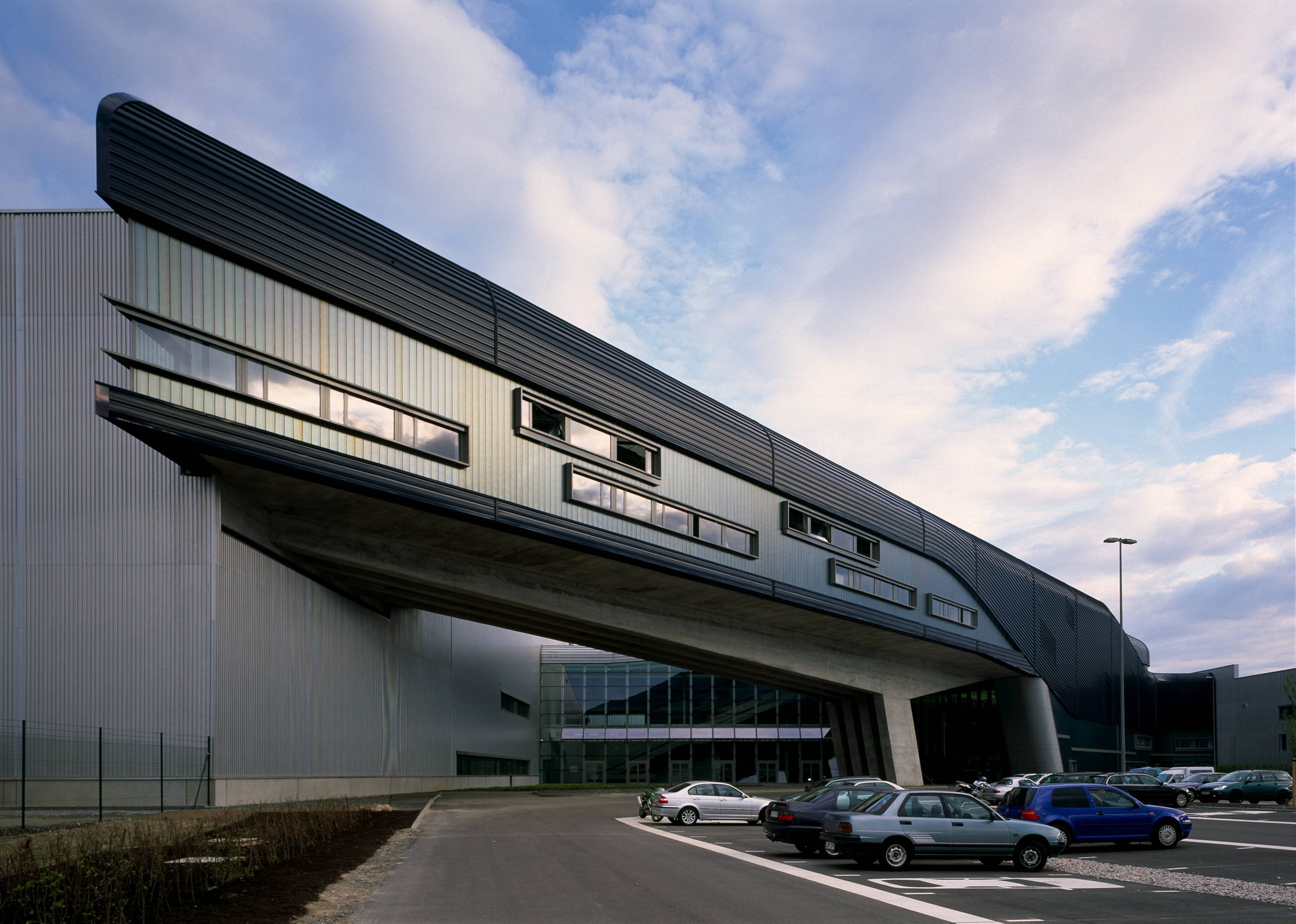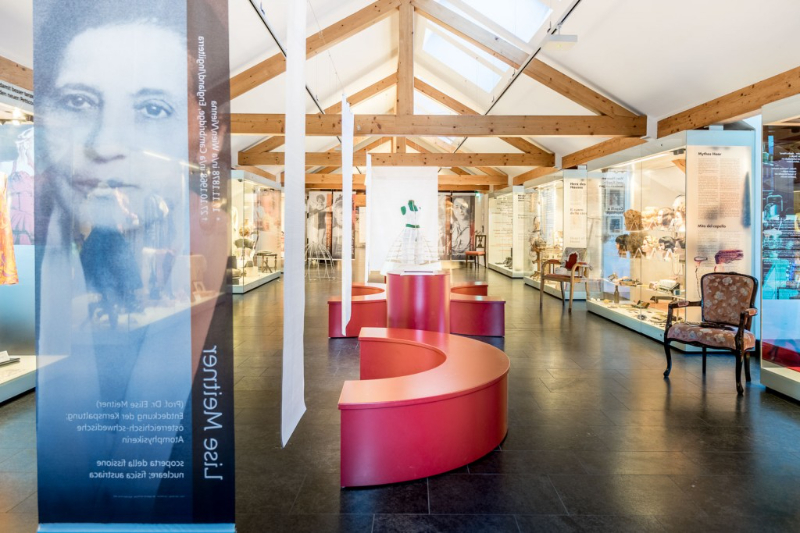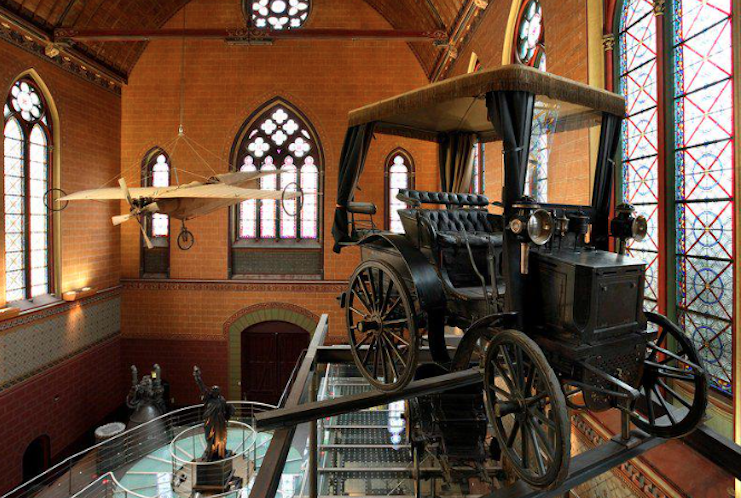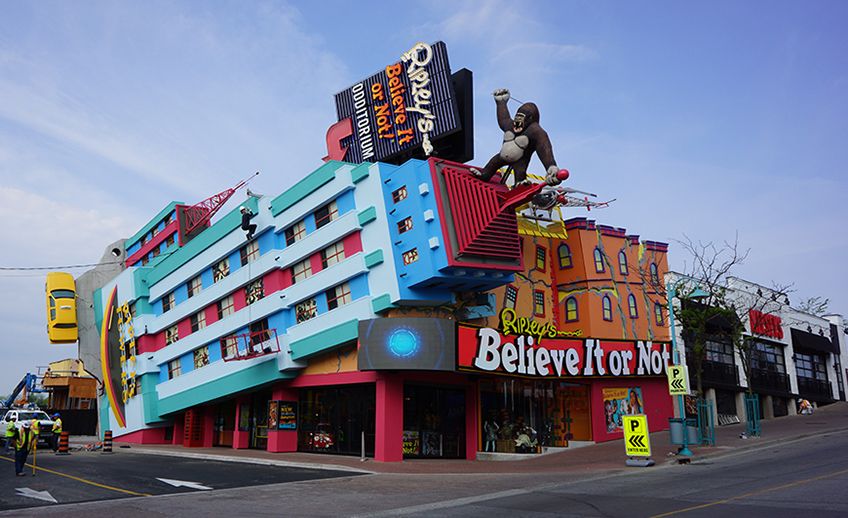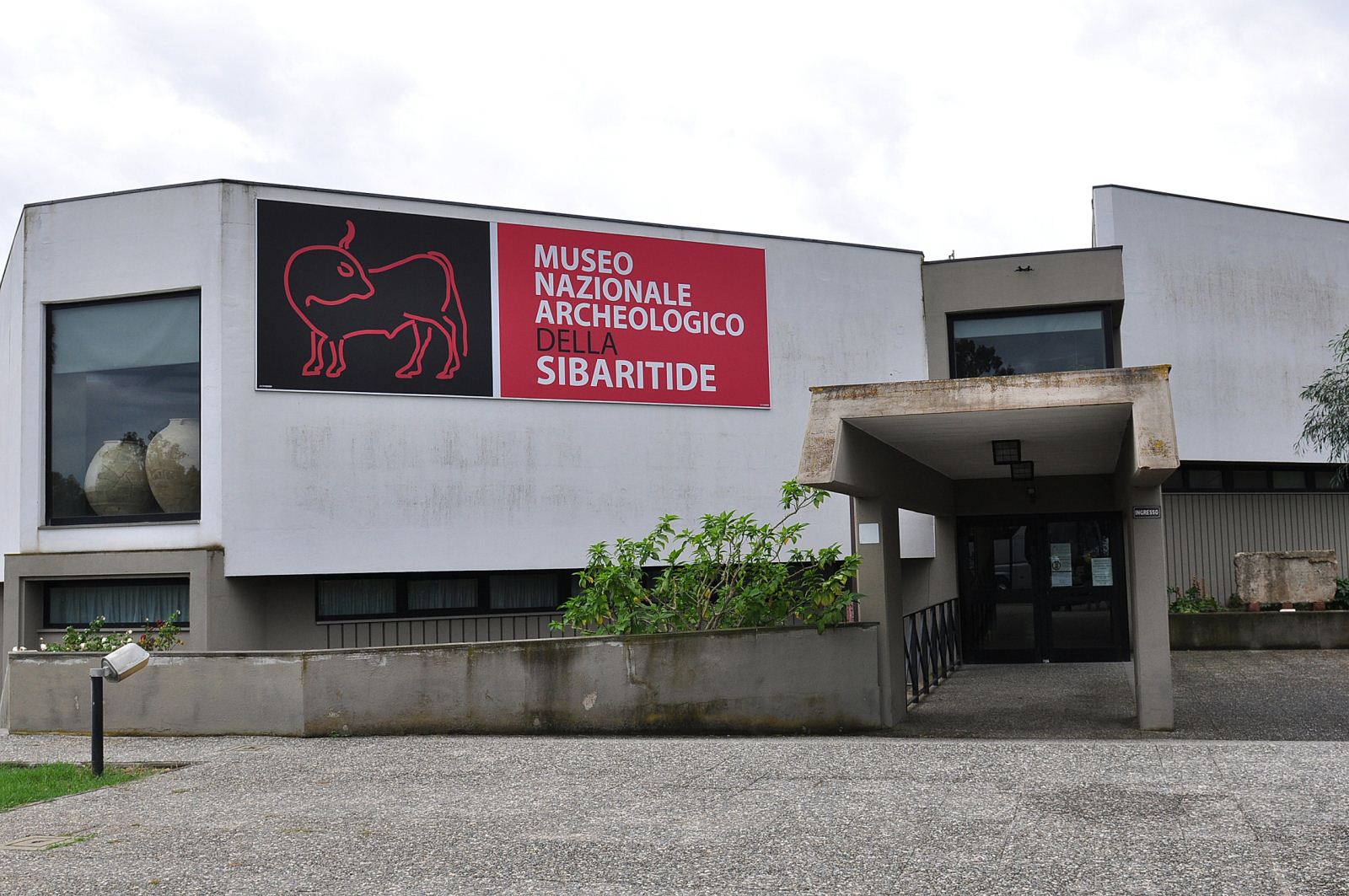BMW Central Building is a building in Leipzig designed by architect Zaha Hadid. It occupies an area of 27000 square meters and houses various offices of BMW, which is also the owner. The building occupies an area of 25,000 square meters and employs 5,500 people inside, with the function of connecting the three production halls of the factory. The project is contained within a narrow strip of land as the adjacent buildings had already been completed. With a wide range of suppliers chosen for the rest of the factory, many fit-out elements were selected from a standard range of products, underlining BMW’s industrial approach.
The central building is the nerve centre of the entire factory complex, the core connecting the 3 main departments of bodywork, paintwork and assembly and serving as the entrance to the plant. The building therefore acts as a force field that attracts and distributes. Its architecture clearly expresses this function: circulation routes and production segments converge on this gigantic compression chamber where workers and visitors but also production lines intersect and communicate. This central building is the hub and "market place" of the dynamic spatial system that is the factory. As a point that provides administrative and reception facilities for workers and visitors, it enhances communication and interchange.
The international spatial organization is centered on the scissor section that seamlessly connects the ground and first floors. Two sequences of terraced plates, like giant staircases, ascend from north to south and south to north capturing a long connective void between them. The first cascade begins near the public lobby and reaches the first floor at the center of the building. The other begins at the offices at the south end and rises to meet the first waterfall, culminating on the upper level above the lobby. At the end of this void is the review area. Above, half-finished cars move along the conveyor tracks between the various production units. The cascading floor plates are large enough to allow flexible occupancy patterns, ensuring greater visual communication than a single flat plate.
The overall goal of integrating personnel from the various divisions is echoed by the internal transparency of the architecture, which reverses the traditional segregation of status groups. A number of engineering and administrative functions are located, for example, within the trajectory of the daily movements of the manual workforce. Employees operate on the ground and first floors.
Night lighting accentuates the aspect of visual permeability, blurring the division between interior and exterior space.
